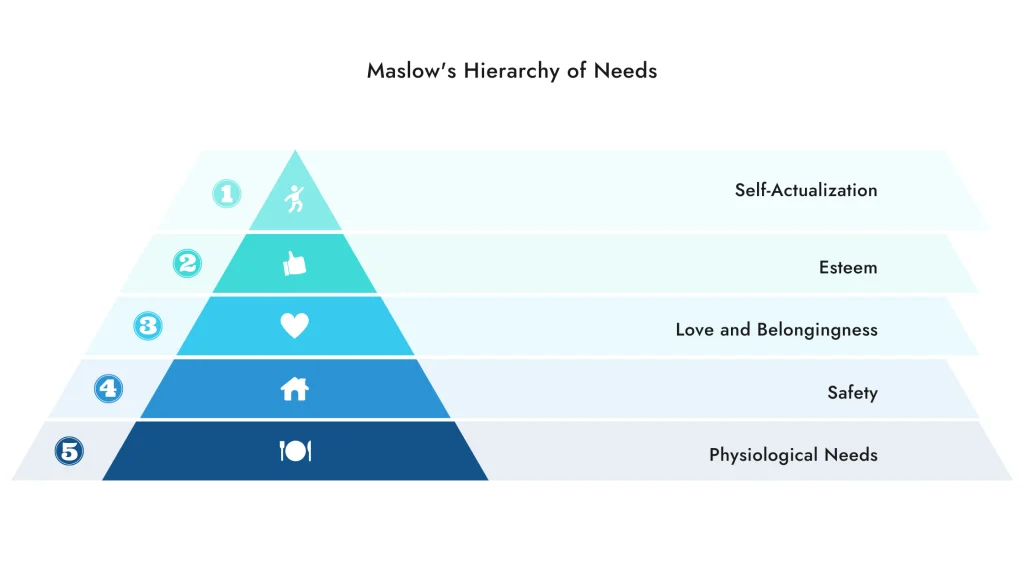Brand development, customer engagement, loyalty promotion: the holy trinity of concerns for any marketing executive. Regardless of size, market or strategy, all brands are looking to do three things when it comes to their customers: get them in, get them excited, and keep them around.
But in increasingly competitive, saturated markets, and with almost impenetrable noise across the usual mechanisms of engagement—particularly social media—marketing executives find themselves increasingly exhausted as they search for new ways to achieve these three goals.
When a new potential option presents itself, marketing executives are faced with an even greater challenge; hitch your wagon to a new and unproven strategy/technology which might potentially prove to be a mere flash-in-the-pan, or wait to see others leverage the success of innovation and risk falling behind and appearing out of date?
The answer? Web 3.0

Where Web 2.0 drove interaction and engagement, Web 3.0 builds upon this, creating not just dialogue but relationships and community, two crucial aspects for the formation of a long-term, meaningful relationship between brand and customer.
But what is Web 3.0?
In essence, it’s a new iteration of the online environment which places a focus on the decentralisation of control – focusing not on unidirectional, hierarchical, two party engagements (such as between social media behemoths and individual users), but instead collaborative, flattened communities of equal standing, driven by a shared relationship with the brand.
Whilst most are familiar with seeing this in the context of currency, Web 3.0 has implications that extend far beyond the world of cryptocurrency.
And marketing is one of those worlds.
Think for a moment about what we know to be the foundations of effective marketing: done well, it taps into the fundamental psychology of both individuals and groups. And as far back as the 1950s, Maslow established that a core component of his ‘hierarchy of needs’ was the idea of connectedness; friendship, shared experience and a sense of belonging, but also self-esteem, with a focus on status and recognition.
The idea of marketing should therefore be to unite people together around your brand as members of something which is bigger than the sum of its parts – fostering belonging, but also developing a sense of personal value within that group. This means not creating a brand relationship, but a brand community, and paying respect to the role and value of each member within it.

Web 3.0 – with its focus on egalitarian engagement where the brand is the facilitator, not the focus, does exactly this. It helps to build an environment that doesn’t feel transactional, fake or contingent – but is instead based on more fundamental human connections: trust, shared values and mutual aspirations.
At the same time though, it taps into that aforementioned aspect of self-esteem; playing to the human desire to possess, the focus of the mind on resource scarcity, and the resulting desire to hold that which is limited and exclusive in nature.
How?

In a word two words: digital collectibles.
Once referred to as NFTs, digital marketers have started to distance themselves from the original term in order to highlight their focus on applying the technology in a way that is more meaningful and less gimmicky.
Digital collectibles can be deployed in a variety of ways, and it’s their flexibility that is so valuable – because it allows companies to create something tailored to both their own values, and those of their customer base. That might be in the form of ‘Social Good’ collectibles, where customers collect a unique, identifying record of their contribution towards a particular social good – whether that’s a unit of carbon or a school place for a disadvantaged child.
Because as NFTs, digital collectibles aren’t merely symbolic, they represent an irreplicable record of something virtual or intangible, but none-the-less real and meaningful.
This means that digital collectibles can also act as the equivalent of a uniquely collectible physical item; rare, desirable, limited and iconic. In other blogs we’ve explored the interesting, engaging and often exciting ways in which leading brands have deployed digital collectibles as a key component of their marketing strategy. For Coca Cola that involves the collection of reworked vintage design collectable cards, playing on the history and ‘friendship’ element of the brand (and thus tying right back to the ‘I’d like to buy the world a Coke’ marketing campaign that was so foundational to Coke’s success, it ended up being the punchline to American hit series Mad Men). Similarly, Louis Vuitton sought to use digital collectibles to let customers tap into the iconic cultural history of the brand, whilst also including an element of gamification to keep their customers engaged, excited and hungry for more LV content, both digital and tangible.
But there is no one-size-fits-all strategy. Take for instance Disney’s collectibles, which straddle the line between catering to those with an obsessional love of the brand, and those with an obsessional love of making money from the brand. In essence, they made a virtual reality of two specific types of ‘Disney’ people; those who wear their rare Gerald Genta Mickey Mouse watch every day because they love it, versus those who keep that same watch in its original packaging, in a humidity controlled box away from direct sunlight, knowing the fortune they stand to lose the moment it leaves its packaging and adorns their wrist. In other words, their collectibles tap into both passion and profit.
Meanwhile Topps, an American company that manufactures trading cards, have not just tapped into the incidental collectibility of their brand (like Disney), but have actually replicated their entire business model (fandom card collection) in digital form. The NBA allows you to collect not just players, but moments – therefore providing a method for individuals to demonstrate their undying team allegiance in a way that goes far beyond what mere jersey sales could achieve. And on the subject of loyalty, Starbucks have kept it simple by using Web 3.0 and NFT technology to introduce a straightforward (but sophisticated) loyalty program.
Regardless of the superficial differences in strategy amongst these brands though, there is one common element to how they deploy digital collectibles: the ability to leverage them to create a community. Brands can use digital collectibles and the lynchpin around which they create platforms; platforms where these digital collectibles are not just acquired (often in conjunction with a more conventional, tangible purchase), but then used; traded, discussed, explored and enjoyed. This means customers don’t just buy into the brand with a meaningful investment, they’re also encouraged to interact through that collectible on a regular basis – driving exactly what marketing departments want: customers who come back again and again. This in turn creates ongoing engagement and deepening connection, which results in enduring loyalty. It changes the brand relationship from one of passivity, to one of reactivity, and moves it all the way through to proactivity.
Who?

Any sensible person knows there’s no one-size-fits-all marketing strategy. So, it follows that digital collectibles aren’t for everybody. Tier One brands are already blazing the way with their digital collectible strategies; Nike, Adidas, Gucci, Time Magazine, Coca Cola, Disney: all have sought to create communities of belonging and excite the emotion of exclusive ownership through digital collectibles.
It’s now time for more brands to take up the mantle and push forward. Challenger brands of any market that want to innovate and engage; brands in sectors that need to foster long-term buy-in and fandom from their users; sports, entertainment, services and leisure/luxury consumption. Companies who want to offer something much bigger than a mere product; they want to create experience and emotion. One that lasts.
For start-up companies, or even more established companies pushing forward into new territory, it can be hard to find the resources to buy-in to the world of digital collectibles; the learning curve can often appear steep with high upfront investment in supporting infrastructure.
It’s here that The Blue Marble comes in: we’ve assembled the knowledge, experience, expertise and platform needed to guide companies through their transition into a Web 3.0 oriented strategy – helping them to develop a digital collectible strategy that is congruent with their wider market position, brand identity and commercial goals. We can move companies to the platform and provider they need to truly leverage the potential of digital collectibles and develop tangible returns on their strategy. More than this, our pay-as-you-go pricing structure eliminates the concerns associated with investing in a self-developed, untested platform which risks missing the mark.
Why Now?

In answering this we return to the point we raised above: when is the right to jump in with a new technology? There are risks associated with market leadership, but equally, market laggards stand to lose just as much.
The idea of digital collectibles currently occupies a sweet spot in this regard. As identified above, market leaders in their respective industries have pushed forward with their own Web 3.0/digital collectible strategies. But second and third tier firms are not yet fully exploiting the opportunity – in part because of the not-always-wonderful publicity that surrounded NFTs. But anybody who has followed the market more closely will recognise that once the initial NFT furore died down (a furore that these days inevitably faces any technological innovation), digital collectibles and Web 3.0 have actually matured well and established their potential for longevity. Indeed, research conducted by HubSpot last year indicated that 14% of marketing professionals have started using some form of NFT in their campaigns, while a further 16% expressed their intention to within the upcoming year.
It is this sweet spot – where a technology is just breaking into its mature phase, but is not yet recognised by the mainstream – that gives progressive-minded companies the greatest opportunity to jump in on the fresh potential of the solution, but with a much lower level of risk.
What now?
If you see your company and brand as bold and progressive, and feel mentally ready to make important steps forward in your marketing strategy, but you feel you lack the knowledge, resources and expertise to do so: that’s where The Blue Marble comes in. Our experience is broad and our platform established and tested, with a proven track record, so we are well positioned to help businesses of all sizes, shapes and strategies make a transition to Web 3.0. But our approach is narrow enough to guarantee the level of focus, attention and context-specific advice needed to ensure that your company receives the personalised attention and advice it deserves, working together and listening closely in order to develop a strategy tailored to your specific needs.
To make the first steps and find out more, chat with us today.



